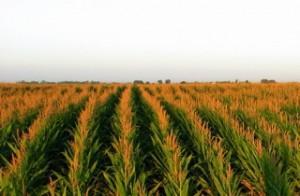
I, among fellow students in my graduate program, have had the recent pleasure of learning about the ‘ecology of managed ecosytems’ from the most cited ecologist in the world: Dr. David Tilman. What is it about Dr. Tilman’s science that has propelled him to the top of the ecologist’s food chain? According to him, it was a choice many years ago to do ‘science that matters’ to everyone. Of course this must have been coupled with a severe case of intellectual superiority, years of strategic positioning, and perhaps a small amount of luck. Whatever it was, it’s gotten his name atop the list of authors and citations for a very large body of research pertaining to human impact on global trends.
The scientific process has become a framework for uncovering the workings of a world previously mystifying. While our ability to participate in such a lofty attempt is unique, the results of sound science can only have a uniquely profound effect on our existence…if they impact the way we exist. But what takes science from journals and labs into the realm of societal impact? Does the research really matter if it doesn’t transcend that gap?According to Dr. Tilman, the first step is usually taken by getting the general public to read about it. To lend a hand in getting Tilman’s science to enlighten as many minds as possible, I’ll highlight some important findings reported in a 2011 PNAS paper, Global food demand and the sustainable intensification of Agriculture[i]:
-
Human population is expected to increase by ~50% by 2050, based on United Nation’s population growth projections.
-
Developing countries are getting richer as their economies strengthen.
-
Because global food demand is a function of population size and wealth, global food demand is forecasted to rise by 100-110% by 2050.
-
The largest component in driving global crop production upwards is an increasing use of Nitrogen-based (N) fertilizers. Fertilizer use explains much of the difference between low-yielding farming practices employed in many developing countries, and the high-intensity practices that pump out high-yield crops in developed countries.
-
Because more wealth = more demand for animal protein, a larger portion of the food demanded will require significantly more land, more energy, and more environmentally compromising activity to produce than were the rise in demand to follow trends towards a decreasing dependence on animal products.
-
In (an oversimplified) conclusion: to feed the world, we’re going to have to use a lot more fertilizer.
BUT, another prolific Tilman paper (Science 2001), Forecasting Agriculturally Driven Global Environmental Change[ii], discusses some topics that make the previous paper’s findings less comfortable to swallow:
-
The quantity of N fertilizer required to double global crop production by 2050 would have to increase by 240-270%.
-
Considering that we’ve already doubled the amount of biologically available nitrogen over what nature cycles, 2050’s extra-ramped up N cycle could be moving 500% more N through biological systems than nature ever has.
-
Because nitrogen is considered the primary limiting nutrient in natural ecosystems, the N content and distribution within an ecosystem plays a large role in determining what lives there. As a result, dumping excess N into such systems can drive rapid extinctions, major shifts in local biogeochemistry, eutrophication, declines in water quality, etc.
-
The (oversimplified) conclusion: if the same methods for increasing crop yields in the last 50 years are relied upon to double food production and keep up with demand to 2050, the environmental impact of N fertilizer use alone could be huge.
The good news is that N use isn’t the only way to increase the amount of food we can make in the same amount of space. These papers both offer great suggestions for increasing yields while decreasing the harmful effects of fertilizer use, and the harmful effects of the land clearing, pesticide use, soil erosion and degraded water quality that tend to accompany excessive fertilizer-use in conventional, intensive agriculture. Many organic, polycultured, small-scale agricultural systems can in fact reach yields much higher than those achieved in the over-fertilized, monocultural systems that industrial agriculture currently covets.
Understanding the implications of projections such as these are extremely important not just for scientists, but for everyone. When the big picture implications of our behaviors appear on the pages of well-respected scientific journals, it’s harder to brush projections off as speculation. But this is good! Trends like vegetarianism, eating organic, and spending a couple of hours on the weekend in your backyard veggie garden can seem like just that: trendy fads. But with science to back up the importance of such trends, suddenly brave trendsetters may start to appear more like valuable leaders of an important revolution. With an increasingly hungry population living on an increasingly strained planet, widespread incorporation of those very trends may mean the difference between eating or starvation in the coming decades and centuries (the ‘century’ scale may be more realistic, if we take this seriously). In the developing countries where the largest hikes in caloric demand are expected to occur, big pushes to help them develop low impact, sustainable agricultural systems will make big impacts on everyone’s future. Some promising solutions for bettering the potential to feed a larger, richer population do exist. But we must be aggressive about encouraging their proliferation on our own soils and abroad.
[i] Tilman, D. et al. ‘Global food demand and the sustainable intensification of agriculture’. PNAS, vol. 108 no. 50. 13 December 2011.
[ii] Tilman, D. et al. ‘Forecasting agriculturally driven global environmental change’ Science vol. 292. 13 April 2001.




